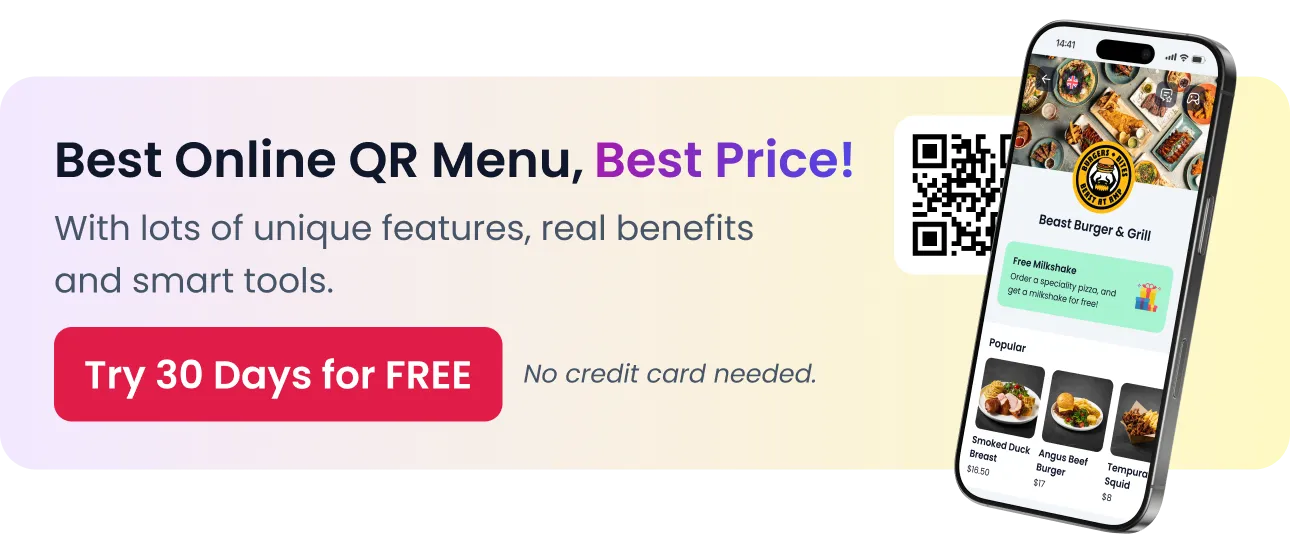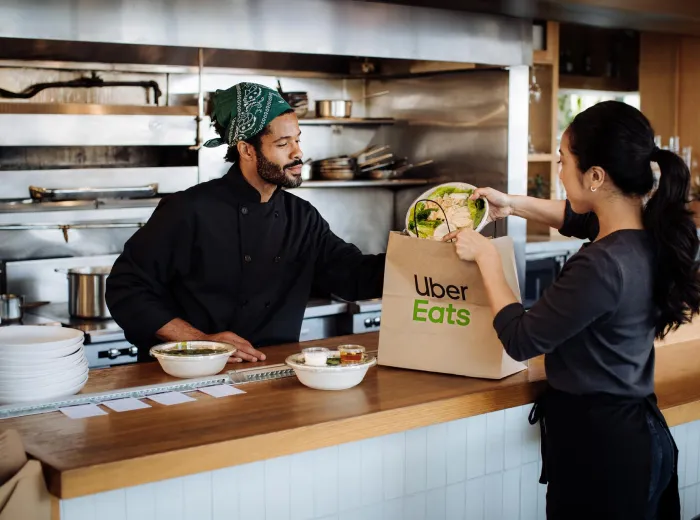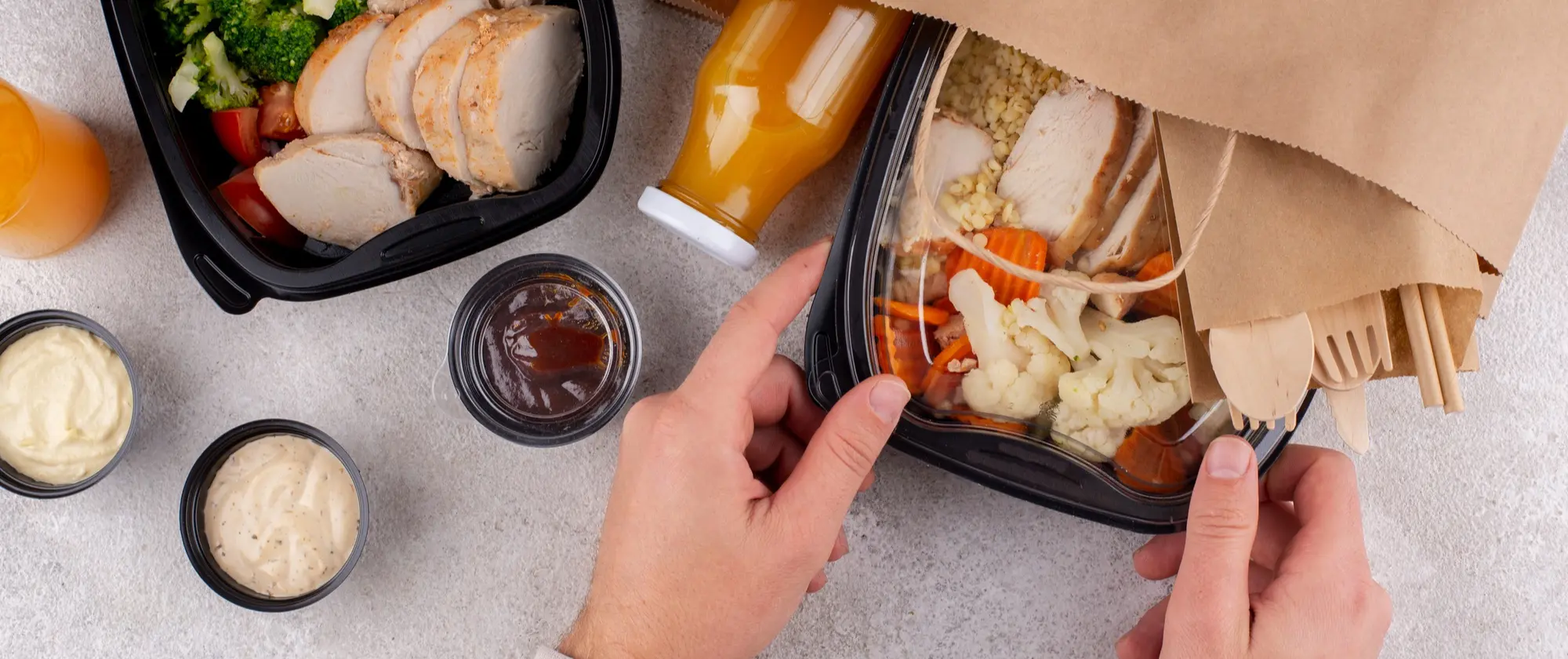
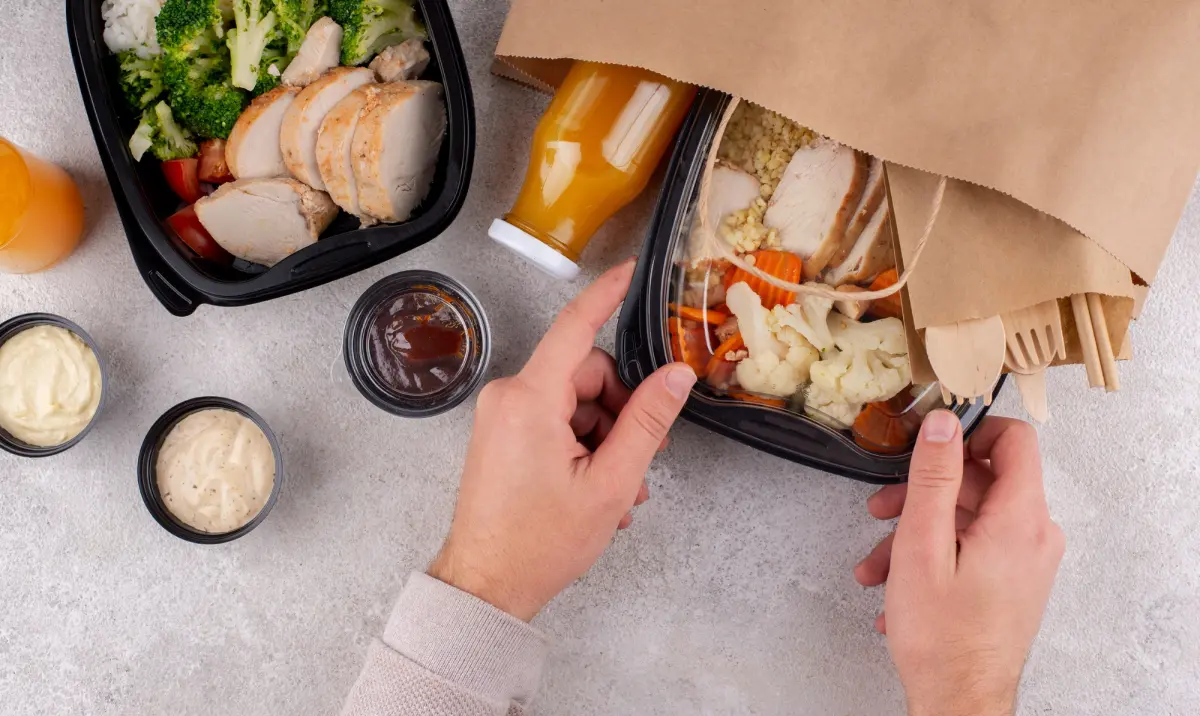
Third-Party Food Delivery: The Pros and Cons for Restaurant Owners
Over the past decade, third-party food delivery services have revolutionized how restaurants operate and customers dine. With platforms like Uber Eats, DoorDash, and Grubhub, restaurants can now reach a wider audience and offer the convenience of dining at home without the need to expand their physical space. For customers, it’s never been easier to explore a variety of cuisines with just a few taps on their smartphone.
While the convenience and potential revenue boost from third-party delivery services are undeniable, they come with their own set of challenges. From high commission fees to reduced control over customer experience, restaurant owners must carefully evaluate whether partnering with these platforms aligns with their business goals.
In this guide, we’ll take a deep dive into the pros and cons of third-party food delivery, exploring its benefits, challenges, and practical strategies to help restaurant owners make informed decisions about integrating these services into their operations. Whether you’re considering signing up or looking for ways to optimize your current delivery setup, this comprehensive guide has you covered.
What Is Third-Party Food Delivery?
Third-party food delivery services have transformed the restaurant industry by bridging the gap between eateries and customers. These platforms act as intermediaries, handling logistics, customer orders, and delivery operations. This system allows restaurants to extend their reach without the complexities of managing in-house delivery operations.
Definition and Overview
Third-party food delivery refers to services provided by external platforms that connect restaurants with customers who wish to order meals for delivery. These platforms streamline the process by:
- Offering a digital marketplace where restaurants list their menus.
- Allowing customers to browse, order, and pay online.
- Assigning delivery drivers to pick up and deliver the food.
Examples of popular third-party platforms include:
- Uber Eats: A global leader with extensive restaurant partnerships.
- DoorDash: Known for promotions and diverse food options.
- Grubhub: A long-established service in the U.S. with loyal users.
With millions of users, these platforms provide unmatched exposure but require restaurants to share a portion of their revenue.
Growth of the Third-Party Delivery Market
The demand for food delivery services has seen exponential growth in recent years. Key trends driving this surge include:
- Changing consumer preferences: Modern diners value convenience and speed, often preferring to eat at home.
- The impact of COVID-19: The pandemic significantly increased demand for delivery services as dine-in options became restricted.
- Technology advancements: Easy-to-use apps and real-time tracking have enhanced the customer experience.
Statistics highlight the scale of the market:
- The global food delivery market was valued at over $150 billion in 2023, doubling in size over five years.
- Over 60% of consumers in the U.S. order delivery at least once a week.
This growth demonstrates the central role third-party platforms now play in the restaurant industry, offering both opportunities and challenges for businesses.
The Benefits of Using Third-Party Food Delivery
Third-party food delivery services offer numerous advantages that can help restaurants expand their customer base, increase revenue, and streamline operations. Leveraging these platforms can provide a significant competitive edge, especially in today’s fast-paced dining landscape. Below, we explore the key benefits of using third-party delivery services.
Expanding Your Customer Base
One of the biggest advantages of third-party food delivery platforms is their ability to connect restaurants with a vast audience. These platforms:
- Attract millions of active users who regularly browse for meal options.
- Allow smaller restaurants to compete with larger chains by providing equal visibility on the app.
- Reach customers beyond the immediate neighborhood, including tourists and office workers.
By being listed on a popular delivery app, your restaurant is more likely to be discovered by people who may not have visited otherwise, helping to grow your customer base.
Increased Sales Without Added Overheads
Third-party platforms enable restaurants to generate additional revenue streams without major upfront costs. Here’s how:
- No need for extra seating or larger premises—your reach is no longer limited by your physical space.
- Delivery orders often boost overall sales during off-peak hours.
- Promotions and discounts offered through the app can attract more customers.
This can be especially beneficial for small businesses that lack the resources to manage in-house delivery logistics.
Convenience and Ease of Use
Managing delivery operations can be complex, but third-party platforms simplify the process. Benefits include:
- Driver network: Platforms provide delivery drivers, eliminating the need for restaurants to hire and manage their own.
- Order management: Orders are processed through the app, reducing errors and providing a clear order history.
- Customer service: Platforms handle customer complaints or issues related to delivery, freeing up your staff to focus on in-house operations.
This convenience allows restaurant owners to focus on food quality and in-house service, while the platform takes care of delivery logistics.
Marketing Opportunities via Delivery Apps
Third-party delivery platforms are more than just order facilitators—they’re also powerful marketing tools. Restaurants can:
- Run promotions and discounts directly through the app to attract more customers.
- Gain exposure through featured placements or sponsored listings.
- Build credibility by accumulating positive customer reviews.
These marketing features can significantly boost your restaurant’s visibility and reputation, especially in competitive markets.
By leveraging these benefits, restaurant owners can tap into new revenue streams, streamline their operations, and enhance their brand presence. However, it’s essential to balance these advantages against the challenges that come with using third-party platforms.
The Drawbacks of Third-Party Food Delivery
While third-party food delivery platforms offer numerous benefits, they are not without their downsides. Restaurant owners must consider these challenges carefully to avoid potential pitfalls and ensure profitability. Below are the key drawbacks associated with these services.
High Commission Fees
One of the biggest complaints from restaurant owners is the high commission fees charged by third-party platforms. These fees:
- Typically range between 15% to 30% of the total order value.
- Can significantly reduce profit margins, especially for small or independent restaurants.
- Often vary depending on the platform and the level of service provided, such as marketing support or exclusive delivery partnerships.
For many restaurants, these fees can make it difficult to sustain operations, particularly if a large portion of sales comes from delivery orders.
Loss of Control Over Customer Experience
When working with a third-party delivery service, restaurants relinquish some control over the customer experience. Common issues include:
- Delivery delays: Late deliveries, often beyond the restaurant’s control, can lead to customer dissatisfaction.
- Food quality: Improper handling during transit can result in cold or damaged food.
- Customer service: Negative interactions with drivers or unresolved issues on the platform can reflect poorly on your business.
These factors can harm your reputation, even if the problems originate from the delivery service and not your restaurant.
Brand Dilution Risks
Listing your restaurant on a third-party platform can blur your brand identity. Challenges include:
- Competing with hundreds of other restaurants on the same platform, making it harder to stand out.
- Customers associating their experience with the platform rather than your restaurant.
- Limited ability to showcase unique branding elements, such as custom packaging or personalized service.
Without consistent branding, your restaurant may struggle to build customer loyalty through these platforms.
Data Access Limitations
Third-party platforms often restrict restaurants from accessing critical customer data. This creates challenges like:
- Limited insights: Restaurants can’t gather valuable information, such as customer demographics or order preferences.
- Missed marketing opportunities: Without direct access to customer details, it’s harder to create personalized offers or build email lists.
- Dependence on the platform: Restaurants must rely on the platform’s marketing tools instead of developing their own customer engagement strategies.
By keeping this data within their ecosystem, platforms make it difficult for restaurants to cultivate direct relationships with their customers.
While third-party delivery services provide undeniable convenience and reach, these drawbacks highlight the importance of a balanced approach. Restaurant owners should weigh these challenges against the benefits to determine if these platforms align with their long-term goals.
Key Factors to Consider Before Signing Up
Deciding whether to partner with a third-party food delivery service requires careful evaluation. While the potential benefits are attractive, understanding the associated costs, operational adjustments, and long-term impacts on your business is crucial. Here are the key factors to consider before signing up.
Understanding Platform Terms and Fees
Not all delivery platforms operate under the same conditions. Before signing a contract, review:
- Commission fees: Understand how much of each order the platform will take (usually 15%-30%).
- Setup and subscription costs: Some platforms charge onboarding or monthly fees in addition to commissions.
- Additional charges: Review any hidden fees, such as marketing or promotional costs.
- Contract terms: Check for exclusivity clauses or long-term commitments that may limit your flexibility.
By clarifying these terms upfront, you can avoid unpleasant surprises and ensure the partnership is financially viable.
Assessing Your Menu for Delivery
Not all menu items are suitable for delivery. Assess your offerings to ensure a seamless experience for delivery customers:
- Identify delivery-friendly items: Focus on dishes that maintain quality during transit, such as sandwiches, pasta, and stir-fries.
- Consider packaging needs: Invest in sturdy, insulated, and spill-proof packaging to protect food quality.
- Avoid fragile dishes: Skip items that may arrive soggy, cold, or deconstructed.
Customizing your menu for delivery helps ensure that customers receive the best version of your food, even when dining at home.
Analyzing Profitability
While third-party delivery can boost sales, it may not always increase profits. To ensure sustainability:
- Calculate order profitability: Deduct platform fees, packaging costs, and delivery-related expenses from each order’s revenue.
- Adjust pricing: Consider slightly increasing menu prices on the platform to offset commission fees while staying competitive.
- Evaluate order volume: Determine whether the additional sales will outweigh the reduced margins.
A thorough profitability analysis will help you understand whether partnering with a delivery platform aligns with your financial goals.
By considering these factors carefully, restaurant owners can make informed decisions about third-party food delivery services. A well-researched partnership ensures that the platform supports your business goals rather than undermining them.
Alternatives to Third-Party Delivery
While third-party food delivery services can be beneficial, they’re not the only option for restaurants looking to offer delivery. Exploring alternatives can help businesses reduce costs, maintain control, and strengthen customer relationships. Below are some viable alternatives to consider.
Setting Up In-House Delivery Services
Managing your own delivery operations gives you full control over the process. Benefits include:
- Enhanced customer experience: You can ensure timely delivery and maintain food quality by managing the entire process.
- Brand consistency: Delivering orders in branded packaging with personalized touches reinforces your identity.
- Cost efficiency in the long run: While the initial investment in vehicles, drivers, and logistics may be high, it eliminates ongoing commission fees.
Key considerations include hiring reliable drivers, implementing an efficient order management system, and training staff to handle the logistics.
Partnering with Local Delivery Services
Local courier services can offer a middle ground between third-party platforms and in-house delivery. Advantages include:
- Lower costs: Local services often charge lower fees than major platforms.
- Flexible terms: These services may provide more customizable agreements tailored to your business needs.
- Community focus: Partnering with a local business supports the community and builds goodwill among local customers.
Research local providers in your area, compare rates, and check their reviews to find a trustworthy partner.
Encouraging Direct Orders
One of the simplest ways to bypass third-party platforms is to drive customers to order directly from your restaurant. Strategies include:
- Online ordering systems: Use tools like Menuviel to create an easy-to-navigate platform for customers.
- Incentives for direct orders: Offer discounts, free delivery, or loyalty points for customers who order directly from your website or app.
- Promoting direct channels: Use social media, email marketing, and in-store signage to encourage direct orders.
By prioritizing direct orders, you can retain full revenue from each sale while building stronger customer relationships.
Choosing an alternative delivery model allows restaurant owners to maintain greater control and minimize costs, while still meeting the growing demand for delivery services. Each option requires careful planning and investment, but the long-term benefits can outweigh the challenges.
Strategies for Success with Third-Party Delivery
To maximize the benefits of third-party food delivery while minimizing its challenges, restaurant owners need a strategic approach. By optimizing operations, leveraging platform tools, and prioritizing quality, you can turn delivery into a profitable extension of your business.
Optimizing Your Online Menu
Your online menu is the first impression customers get of your restaurant on delivery platforms. To make it as appealing as possible:
- Use professional photos: High-quality images increase the likelihood of customers choosing your dishes.
- Write clear, enticing descriptions: Highlight key ingredients and flavors in a way that excites potential buyers.
- Focus on best-sellers: Feature your most popular and delivery-friendly items at the top of your menu.
- Add customization options: Allow customers to modify orders, such as choosing toppings or portion sizes.
A well-optimized menu can significantly boost your sales and help you stand out in a crowded marketplace.
Enhancing Food Quality for Delivery
Maintaining food quality during delivery is essential for customer satisfaction. Key steps include:
- Investing in durable packaging: Use insulated, leak-proof, and eco-friendly materials to preserve freshness and presentation.
- Preparing delivery-friendly dishes: Choose items that maintain their texture, temperature, and appearance during transit.
- Testing delivery routes: Conduct quality checks by simulating the delivery experience to identify potential issues.
Prioritizing food quality helps ensure that customers receive a consistent and satisfying experience, encouraging repeat orders.
Promoting Your Restaurant on Delivery Apps
Delivery platforms often provide marketing tools to increase visibility and attract more customers. To make the most of these:
- Run promotions: Offer discounts, free delivery, or special deals during slow periods or to attract new customers.
- Invest in sponsored listings: Pay for premium placement on the app to appear at the top of search results.
- Respond to customer reviews: Engage with feedback to build trust and demonstrate your commitment to quality service.
Effective promotion ensures your restaurant remains competitive and captures the attention of app users.
By implementing these strategies, restaurant owners can optimize their partnership with third-party delivery platforms. A focus on menu appeal, food quality, and strategic promotion will help you turn delivery into a profitable and sustainable revenue stream.
Is Third-Party Food Delivery Right for Your Restaurant?
Deciding whether third-party food delivery is the right choice for your restaurant depends on several factors, including your goals, resources, and customer base. While these platforms offer undeniable benefits, they are not a one-size-fits-all solution. Below, we explore the key considerations to help you make an informed decision.
Factors to Help You Decide
Before signing up for a third-party delivery service, assess these critical factors:
- Customer demand:
- Do your customers frequently request delivery options?
- Is your restaurant located in an area with a high demand for delivery services?
- Financial health:
- Can your profit margins absorb the platform’s commission fees?
- Will delivery orders offset these costs with higher sales volumes?
- Operational capacity:
- Is your kitchen equipped to handle additional delivery orders without impacting dine-in service?
- Do you have the staff to manage increased demand during peak hours?
Carefully evaluating these elements will help you understand if your business is ready to handle the challenges of third-party delivery.
Balancing Pros and Cons
To determine whether third-party delivery aligns with your restaurant’s goals, weigh the benefits against the potential drawbacks:
Pros:
- Increased exposure to new customers.
- Opportunity to boost sales during off-peak hours.
- Simplified logistics compared to in-house delivery.
Cons:
- High commission fees that may erode profits.
- Reduced control over customer experience.
- Dependency on platforms for order volume.
By creating a pros-and-cons list specific to your restaurant, you can better assess whether the advantages outweigh the challenges.
Third-party food delivery is a powerful tool for some restaurants, but it’s not suitable for every business. Understanding your unique needs and limitations is essential for making the right decision. Whether you choose to partner with a platform or explore alternatives, the key is to align your approach with your long-term goals.
Key Takeaways
Third-party food delivery can be a valuable tool for restaurant owners, but it requires careful consideration and strategic planning to maximize its benefits. Below are the key points to remember from this guide:
- Understanding the basics: Third-party food delivery platforms connect restaurants with a broader audience, providing convenience and increased visibility.
- Benefits: These platforms help expand your customer base, generate additional revenue, and simplify delivery logistics without requiring significant upfront investment.
- Challenges: High commission fees, loss of control over customer experience, and limited access to customer data can impact profitability and brand identity.
- Alternatives: Options such as in-house delivery, local courier partnerships, and encouraging direct orders can provide more control and reduce costs.
- Success strategies: Focus on optimizing your menu, maintaining food quality, and using platform marketing tools to attract and retain customers.
- Decision-making: Weigh the pros and cons of third-party delivery based on your restaurant’s financial health, customer demand, and operational capacity.
By thoughtfully evaluating these aspects, you can determine whether third-party food delivery is a fit for your restaurant or if alternative solutions better align with your business goals. With a clear strategy in place, you’ll be well-equipped to navigate the delivery landscape and drive sustainable growth.
Frequently Asked Questions About Third-Party Food Delivery
Discover clear, actionable insights to help restaurant owners weigh the pros and cons of partnering with third-party delivery platforms. These answers address the most common search queries on this topic.
What are the real benefits of using third-party food delivery services for restaurants?
Third-party platforms like Uber Eats, DoorDash, and Grubhub help restaurants reach a much larger, tech-savvy audience without the need for more seating or delivery staff. They offer extra revenue during off-peak hours and simplify logistics by handling orders, drivers, and customer service. These platforms also give restaurants access to promotions, app-based marketing, and higher visibility—even for smaller businesses.
How do commission fees from third-party delivery platforms affect restaurant profit margins?
Delivery platforms typically charge commissions ranging from 15% to 30% per order. These fees can significantly erode slim restaurant profit margins, especially when factoring in packaging and other delivery-related costs. Careful analysis and possible menu price adjustment are essential to maintain profitability.
Can using third-party services lead to a loss of brand control and customer connection?
Yes. Restaurants often lose control over the delivery experience—from late drop-offs to damaged food—and customers may associate their experience more with the app than with the restaurant. Additionally, limited access to customer data prevents restaurants from building direct relationships or personalized marketing strategies.
What factors should restaurant owners evaluate before partnering with third-party delivery platforms?
Consider the platform’s commission structure, setup or subscription fees, and any exclusive or long-term contract terms. Analyze whether your menu items travel well, assess the impact on your kitchen capacity, and calculate order-level profitability. Evaluating customer demand and your restaurant’s operational ability to fulfill delivery orders smoothly is crucial.
Are there better alternatives to third-party delivery that help maintain more control and reduce costs?
Absolutely. Options include setting up your own in-house delivery team for full control and branding, partnering with local courier services for flexible, community-focused delivery options, or directing customers to order directly via your website or app with incentives like discounts, loyalty points, or free delivery.
ABOUT THE AUTHOR
Erkin Coban
Your Customers Deserve The Best
And we got Menuviel for them.
The fastest and easy-to-use online QR menu with 12+ unique features. Choose Menuviel and elevate your service quality to the next level.
Use free for the first 30 days.
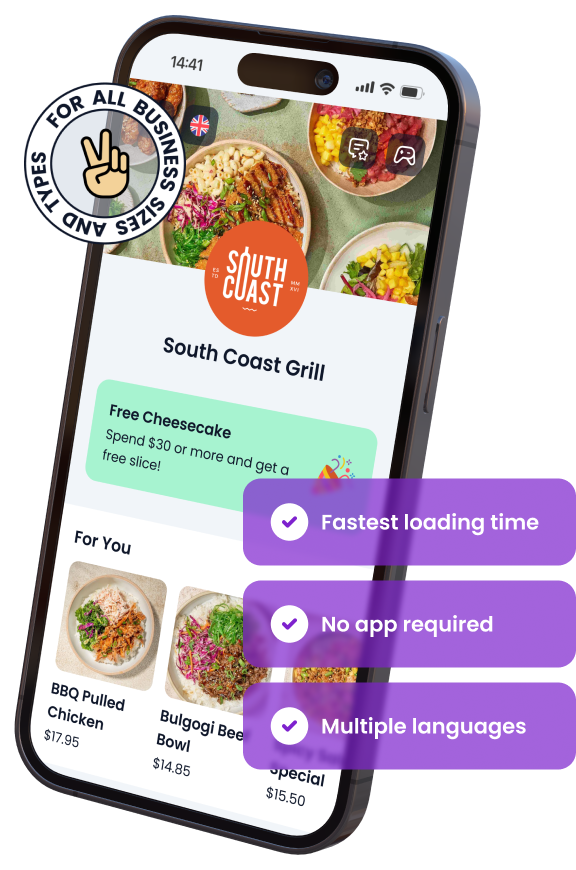
In This Article

Free AI Tools for Restaurants
TRY NOW ➜
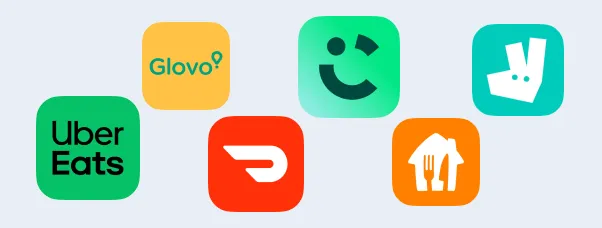
Add your food delivery app links
Make it easy for customers to find your restaurant by adding direct links to popular food delivery apps.


